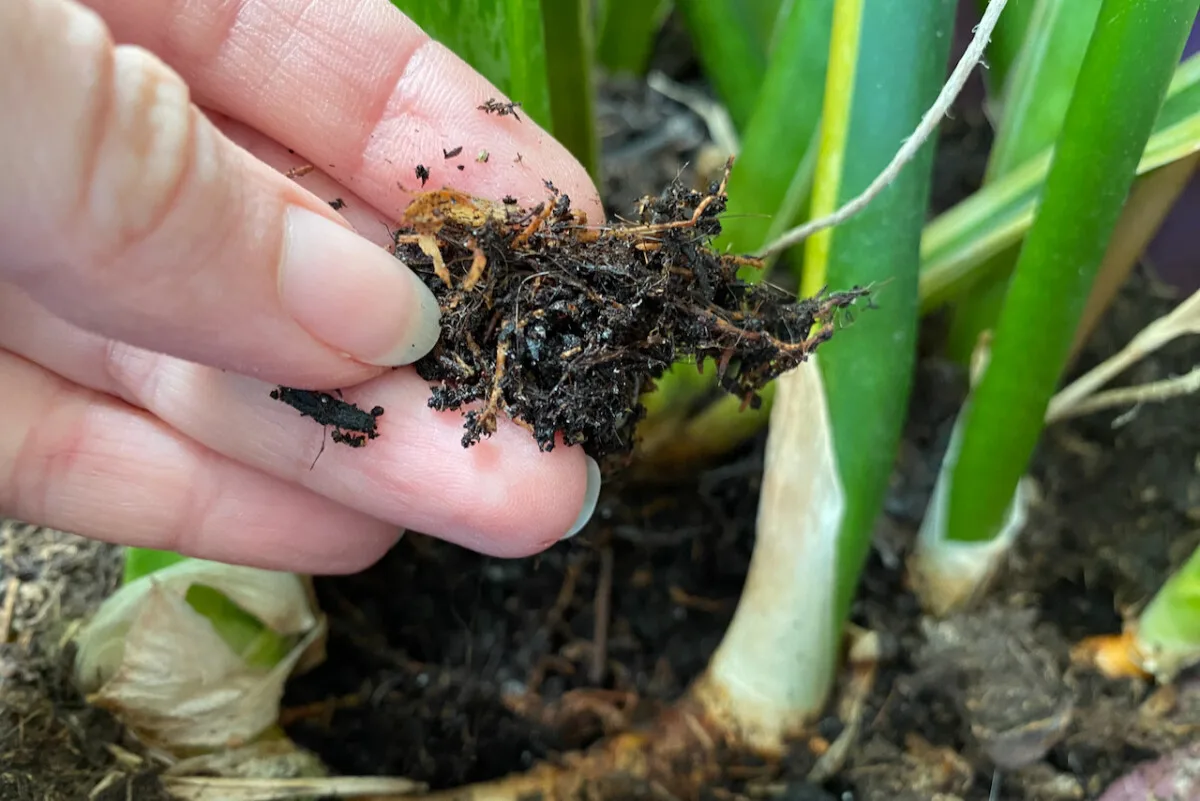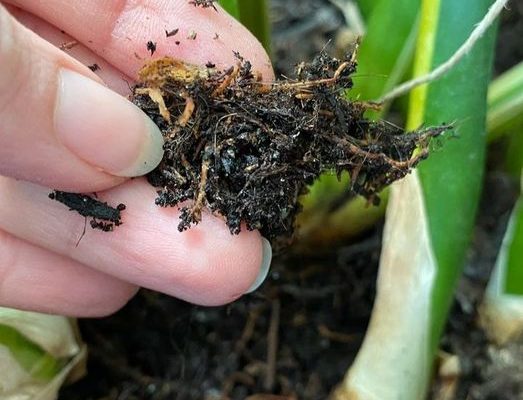If you asked me to think of a smell I associated with plants, my first thoughts would fly to scented garden darlings such as jasmine, honeysuckle and fragrant roses. It wouldn’t cross my mind to recall the musty soil smell that, despite my best efforts, sometimes emanates from the direction of one of my potted houseplants.
Heaven forbid I get a first whiff of a smelly houseplant when my mom happens to be visiting. (Been there, done that, hid the plant successfully until the visit was over.)
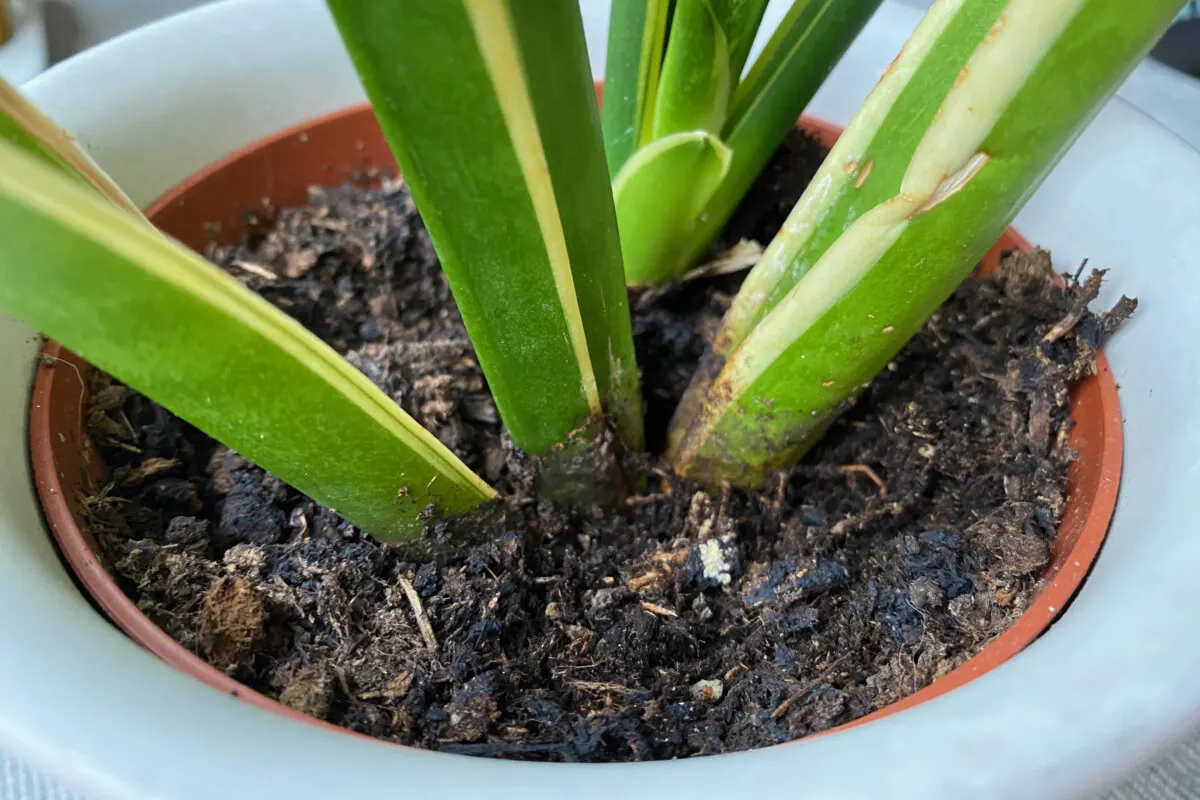
I think having a sharp sense of smell is invaluable to gardeners. And not just to enjoy the floral breeze on a warm summer night.
We can use our sense of smell to identify when something is not quite right.
Olfaction is one of our most discerning senses. In fact, recent research shows that humans can identify way more than the ten thousand smells we thought we were able to distinguish.
Sniffing the potting soil that our houseplants are growing in can sometimes make the difference between nipping a problem in the bud and catching it too late.
What should healthy potting soil smell like?
In my article on how to repot a peace lily, I mentioned this one extra step as a precaution when you’re switching your plant to a new container: give the bare roots a sniff. Then give the old potting soil a sniff too.
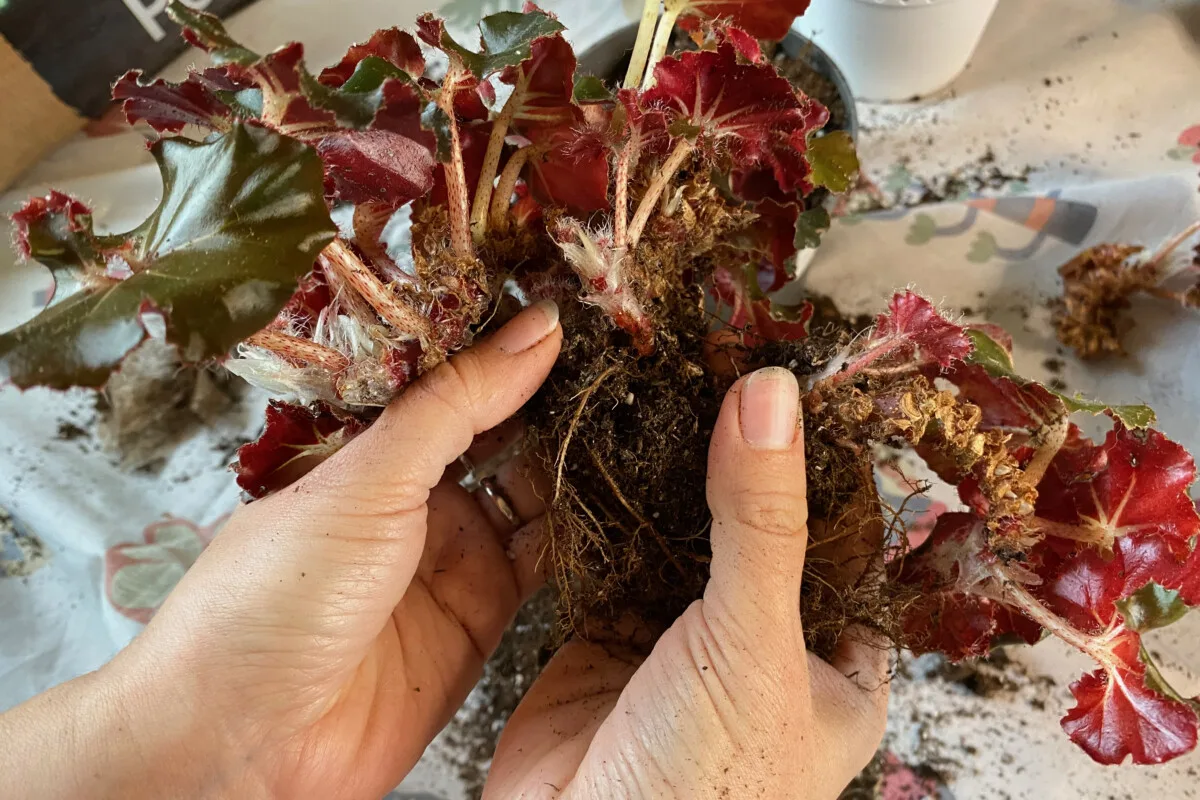
What does it smell like?
If the roots have a slight earthy smell, relatively faint, then they’re likely healthy. Pat yourself on the back. You’re a good plant parent.
What shouldn’t they smell like?
It’s hard to describe a smell in words, but you’ll know it when you … sniff it.
If it smells musty, sickly or “off,” then something’s rotten in the state of houseplants. If you’ve identified this foul fragrance while repotting, the good news is that you’re in the process of fixing the problem.
Why does houseplant potting soil smell musty?
There are a few reasons why potting soil smells musty, and oftentimes, these reasons are intertwined. I’m mentioning these reasons so you can prevent this problem in the future.
However, in my experience, even when you know why, the fix doesn’t come easy. For a pot that’s already quite stinky, the only solution is to repot your houseplant.
1. You are watering your plants too much or too often.
In this house, the most common reason why the soil starts to smell funky is because it gets over-saturated with water. If a plant is getting more water than it can absorb, the moisture lingers in the soil too long, causing the roots to rot.
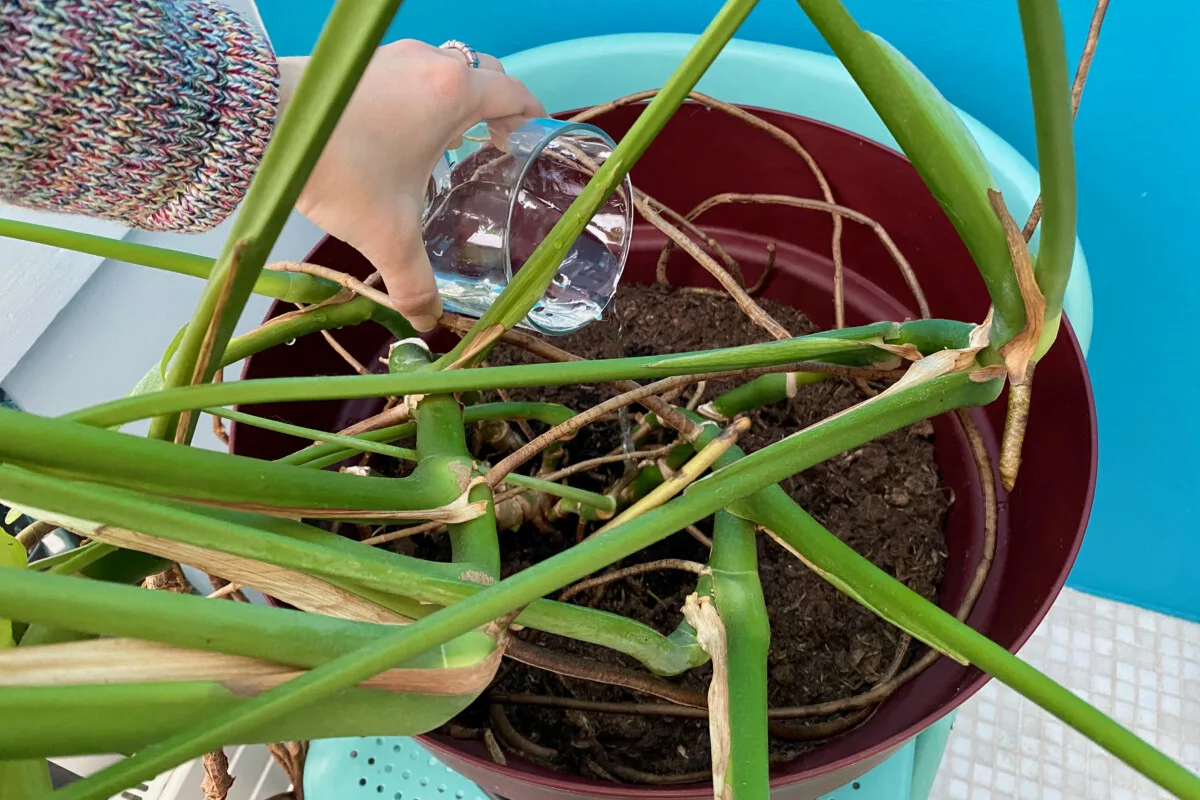
Sometimes, it’s not just how much I water the plant, but how often. A habit that I used to have when I first started my houseplant collection was emptying my water glasses in the plant pots. Gradually, this naturally led to overwatering my houseplants. But because it was happening so slowly, it took me a while to notice and correct this behavior.
Another no-no is watering your houseplants on a strict schedule (say, once a week), no matter what. Some plants need more water than others. You wouldn’t water your cacti as often as you water your begonias, for example. (Or would you?)
Your plants’ watering needs will change throughout the year.
Similarly, the same plant has different watering needs throughout the year. During the cold and dark months, houseplants need less water than they do in the summer. In spring, when plants start growing again in earnest, you’ll have to adjust their watering schedule. After a period of dormancy, it can be tempting to overcompensate by drowning your plants.
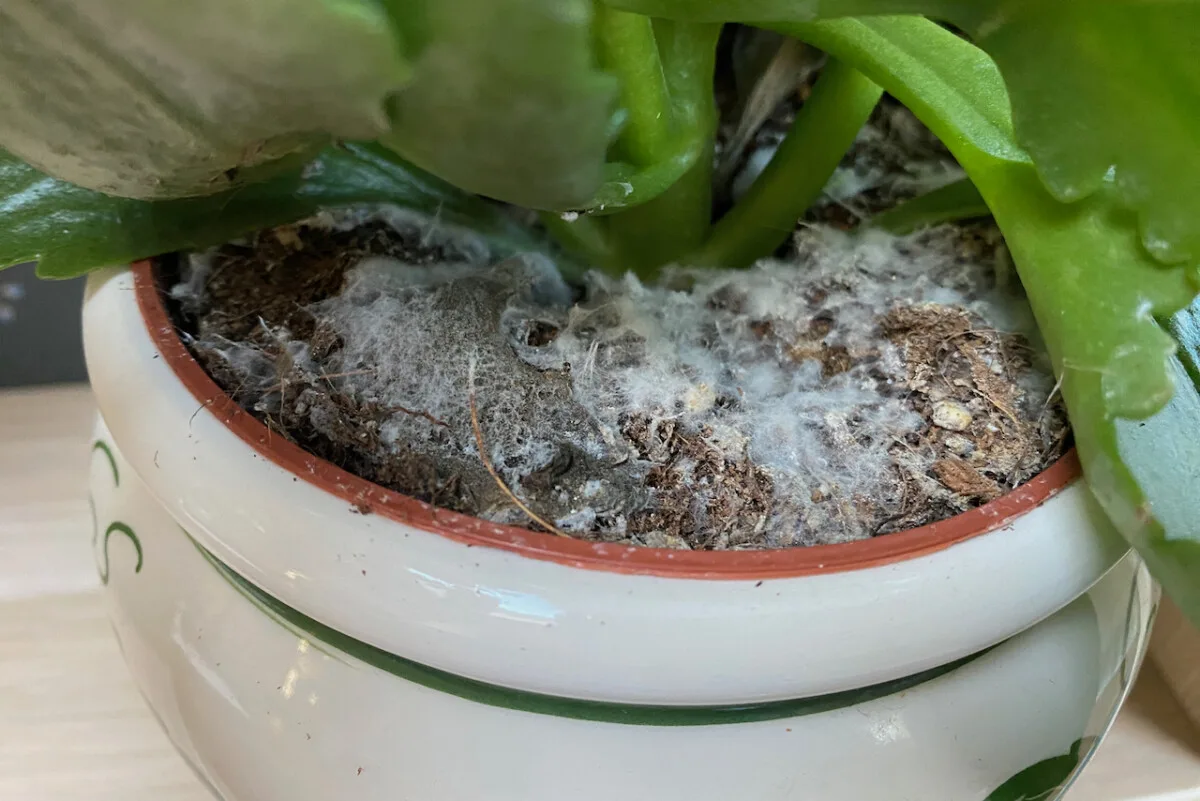
The best strategy – and one that works for me now – is to observe each houseplant and only water when the top couple of inches of soil feel dry to the touch. Pay attention to how the plants adjust to this method. You’ll learn how to calibrate your watering over time. But always start by underwatering. You can correct dry soil, but you can’t undo root rot.
You might need a moisture meter to teach you better habits.
If you’re new at this and the newbie plant parent anxiety is getting the better of you, you could enlist the help of a moisture meter. It’s a great beginner-friendly tool to learn what works and what doesn’t for your plants in your environment. Plus, it’s fun to geek out about measurements and record what works and what doesn’t in your plant journal.
Think of it as a stepping stone in your plant parenthood journey.
I used one for a while, but I managed to lose it in a house move. Luckily, by then, I already had some pretty good habits ingrained in my routine.
2. The potting soil mix isn’t draining well.
Ok, let’s say you’re mastering the art of properly watering your houseplants. But the soil still has a dubious smell and a sticky and slimy texture. What gives?
In this case, your potting soil mix might not be draining well enough for fast enough.
Did you use the right potting soil?
Avoid using bagged soil meant for outdoor containers or seed starting. For houseplants, you should only use a potting mix that has been formulated specifically for indoor containers. You’ll notice that it will have added elements to the soil, such as coco coir (a by-product of coconut processing), perlite, vermiculite or shredded bark.
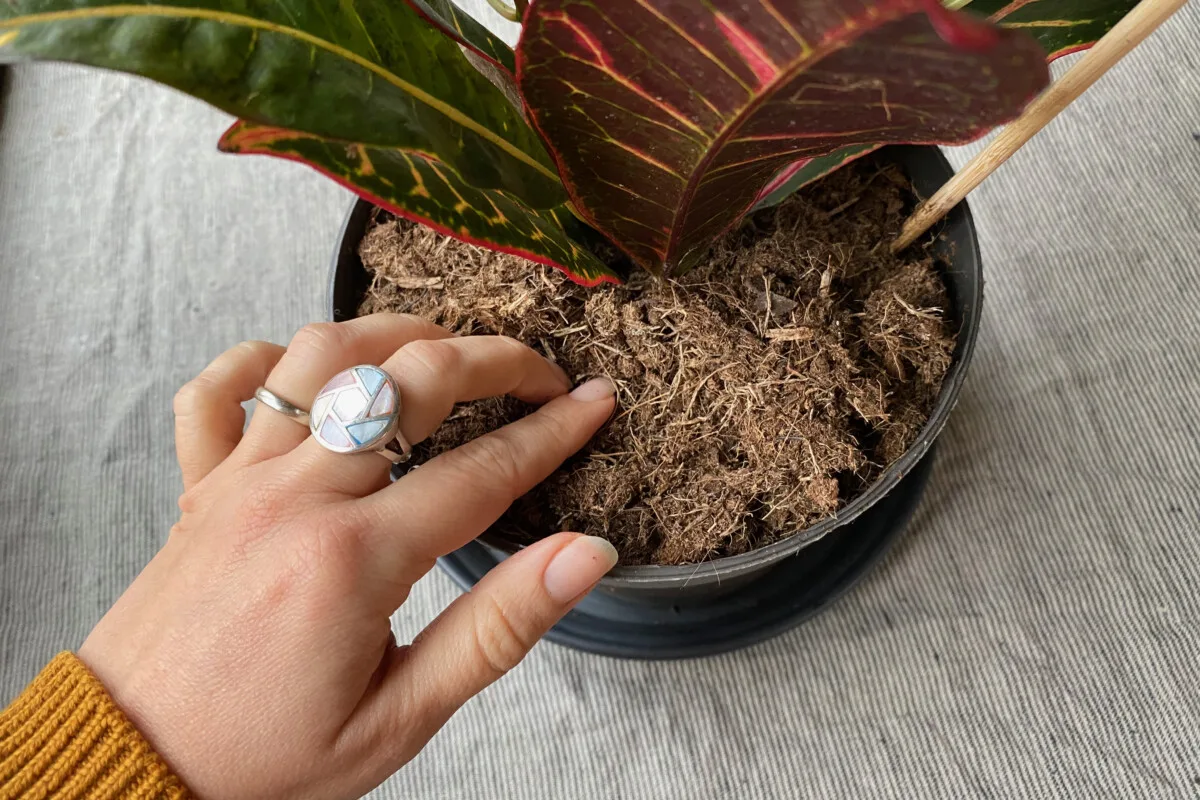
If you want to mix your own growing medium for houseplants, Tracey shares a good “recipe” in this article.
While we’re at it, make sure the pot has enough drainage holes, evenly spaced around the bottom of the container. Avoid using pots that only have one hole in the middle of the container, especially if you have a tendency to overwater.
I’ve started noticing the popularity of pots with saucers that snap tight in place. But a very common design flaw for this model is the fact that the drainage holes end up being obstructed by the snapping mechanism. It’s annoying and not easy to notice if it happens, so I avoid this kind of plant container.
3. The soil isn’t properly aerated.
Ok, let’s say that you’ve avoided both overwatering and poorly draining soil.
Another cause why your houseplant soil smells musty is because it has become compacted. I’ve noticed this invariably happens after about nine months to a year after I’ve repotted my plant. The water goes right through without the soil absorbing much.
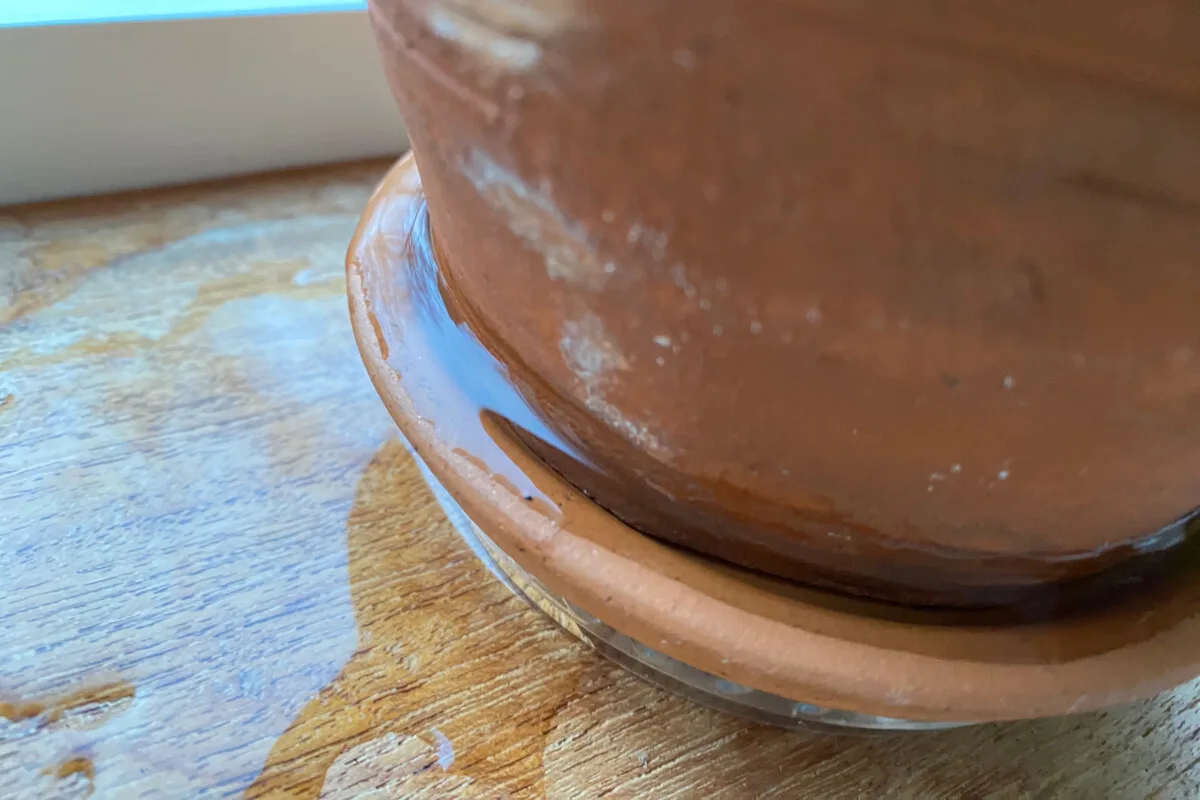
Two clues that your soil is compacted.
Compaction is somewhat unavoidable, especially for the plants that we water from above. (As opposed to watering from below, just add water to the saucer the pot is placed on.) A telltale sign that your soil is compacted is the fact that it’s starting to separate from the sides of the pot.
The compacted soil lacks oxygen, thus becoming anaerobic. Houseplant roots need oxygen, so when they can’t access it through the soil, they start dying off. Enter the foul smell. Yes, soil can smell weird, not only when it looks soggy but also when it looks as hard as cement. I’ve noticed that, in this latter case, it only smells funny when you water it.
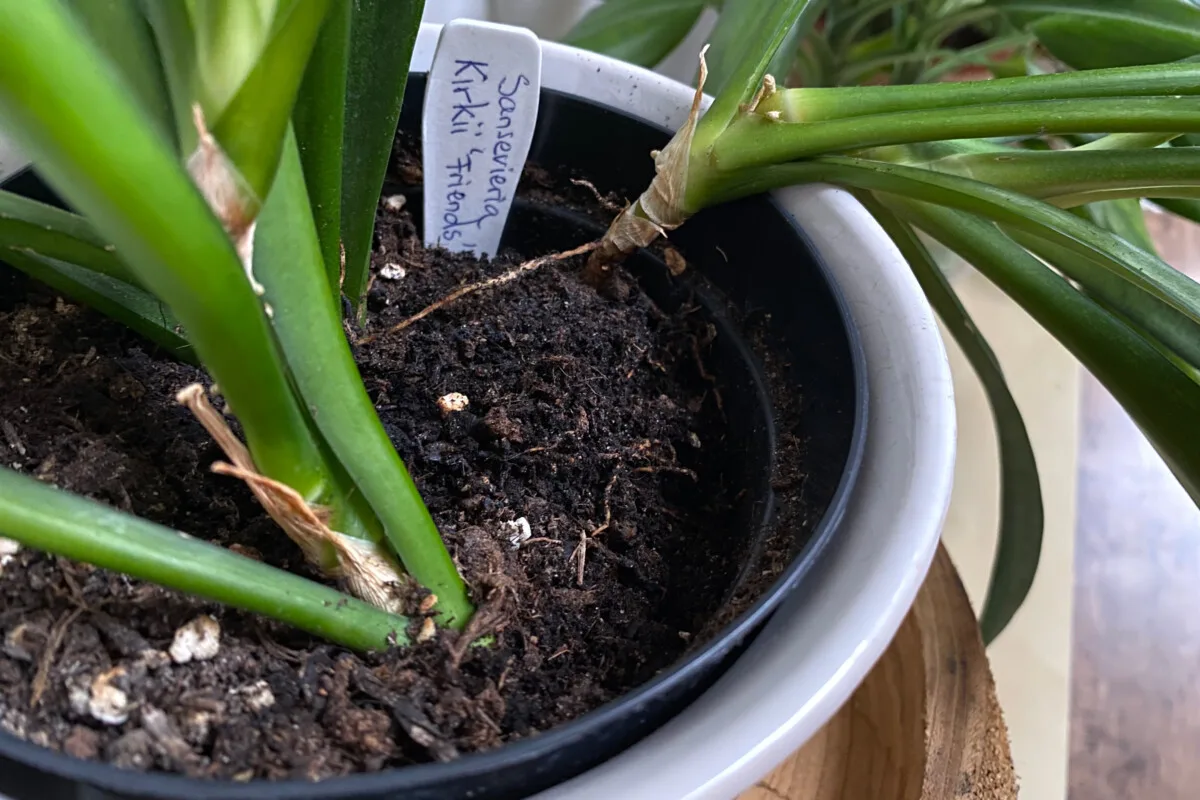
I’ve already written a guide on why, when and how to aerate your houseplants. So I won’t go into too many details again. In a nutshell, you simply insert a stick into the soil every inch or so, then rotate it around to create some air pockets while you’re loosening up the soil. Repeat the process until you’ve covered the entire surface of the soil.
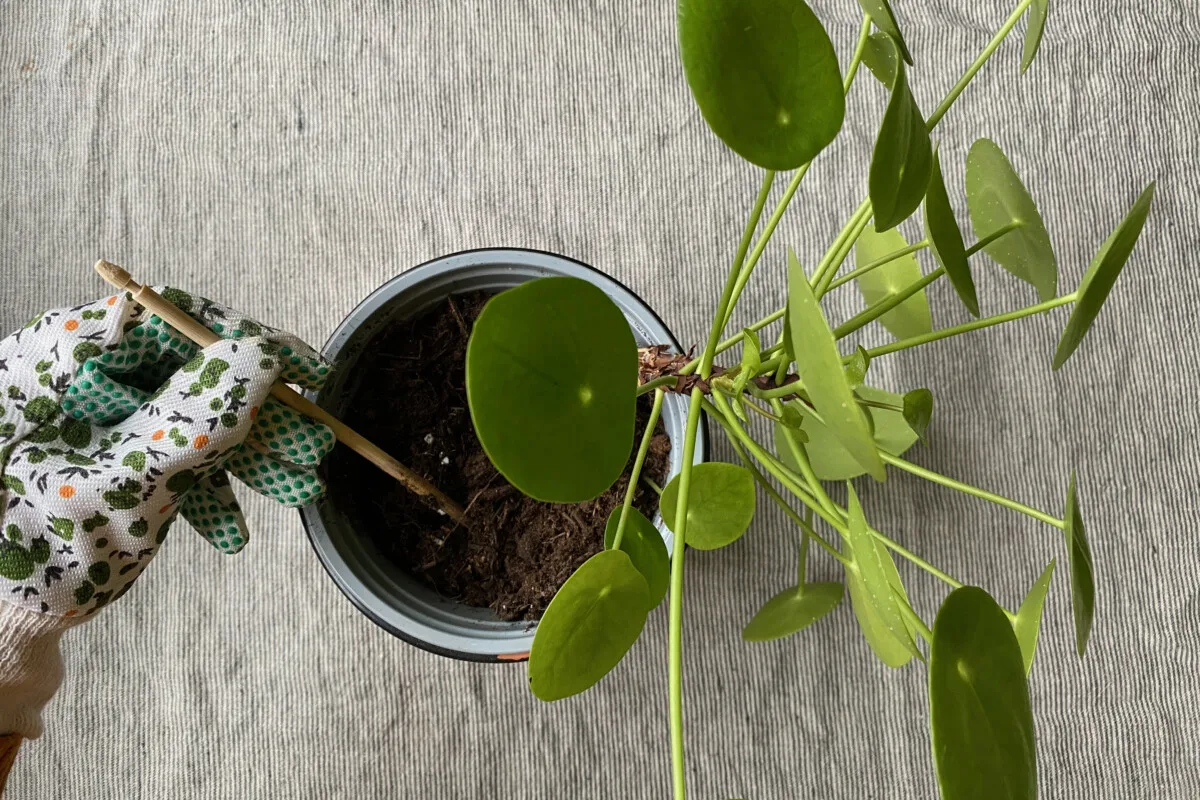
To get the best results, aerate before you water the plants. This will allow the water to be distributed evenly throughout the container. In my experience, if I remember to keep up with preventative aeration, the soil is much less likely to start smelling musty.
What can I do if my houseplant’s soil smells musty?
The only thing that solved this problem for me, in one hundred percent of the cases, was to completely change the soil.
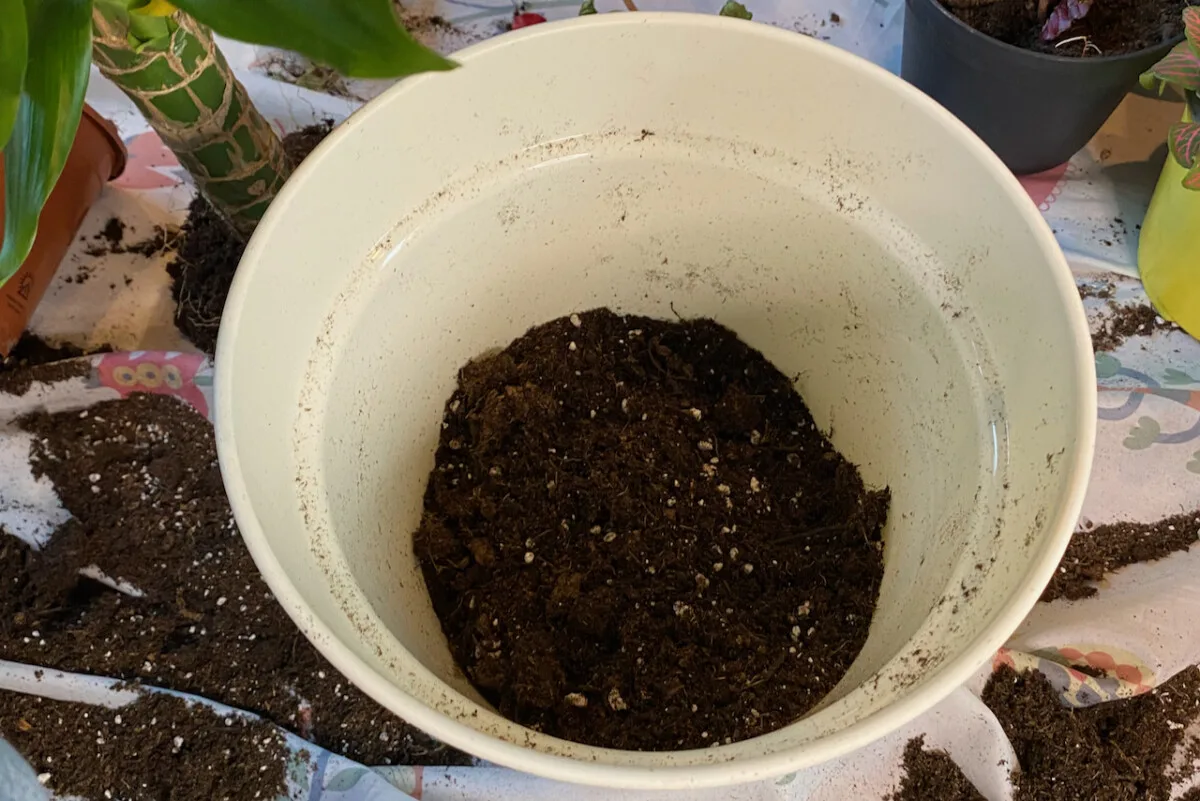
I know it’s a hassle, but it needs to be done. There is a high chance that your plant is still salvageable if you don’t procrastinate on repotting it. (Another lesson I had to learn the hard way.)
When you’re transplanting, make sure you clean the roots really well under running water. If there are any roots that look brown and slimy – and that smell just as rotten as the soil – cut them off and discard them.
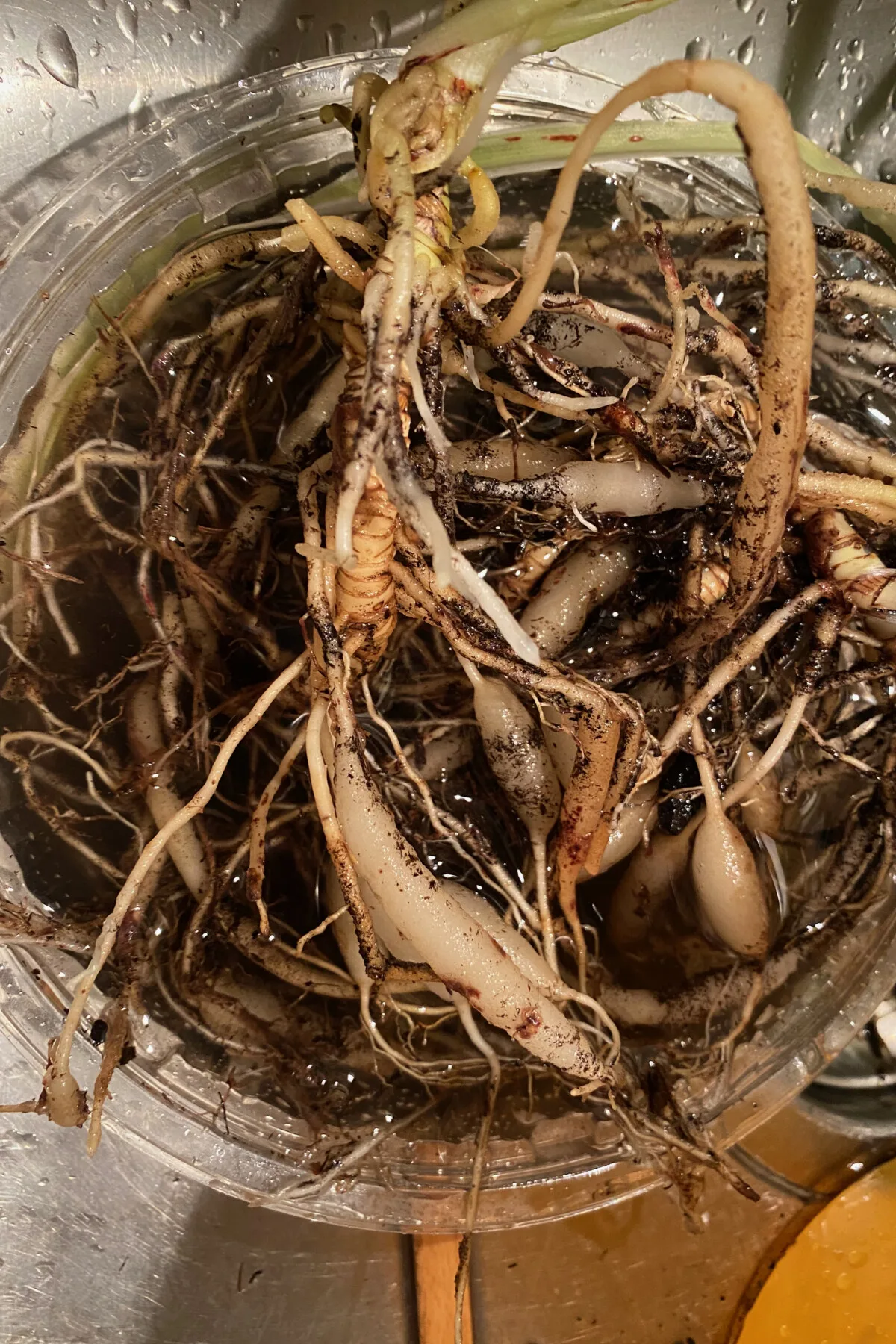
Now’s a good chance to work on that plant observation habit too. Does it look like you could squeeze out water from the old soil if you wrung it? Then you’ve probably been overwatering it. Once you’ve refreshed the potting soil, get your plant on a more suitable watering regimen.
One solution for musty-smelling soil that didn’t work for me.
In trying to be more efficient, or perhaps in succumbing to “lazy gardener syndrome”, I tried to take a few shortcuts along the way.
So instead of repotting the entire plant, I scooped out the top soil – about a quarter of the way down – and then replaced it with fresh potting soil.
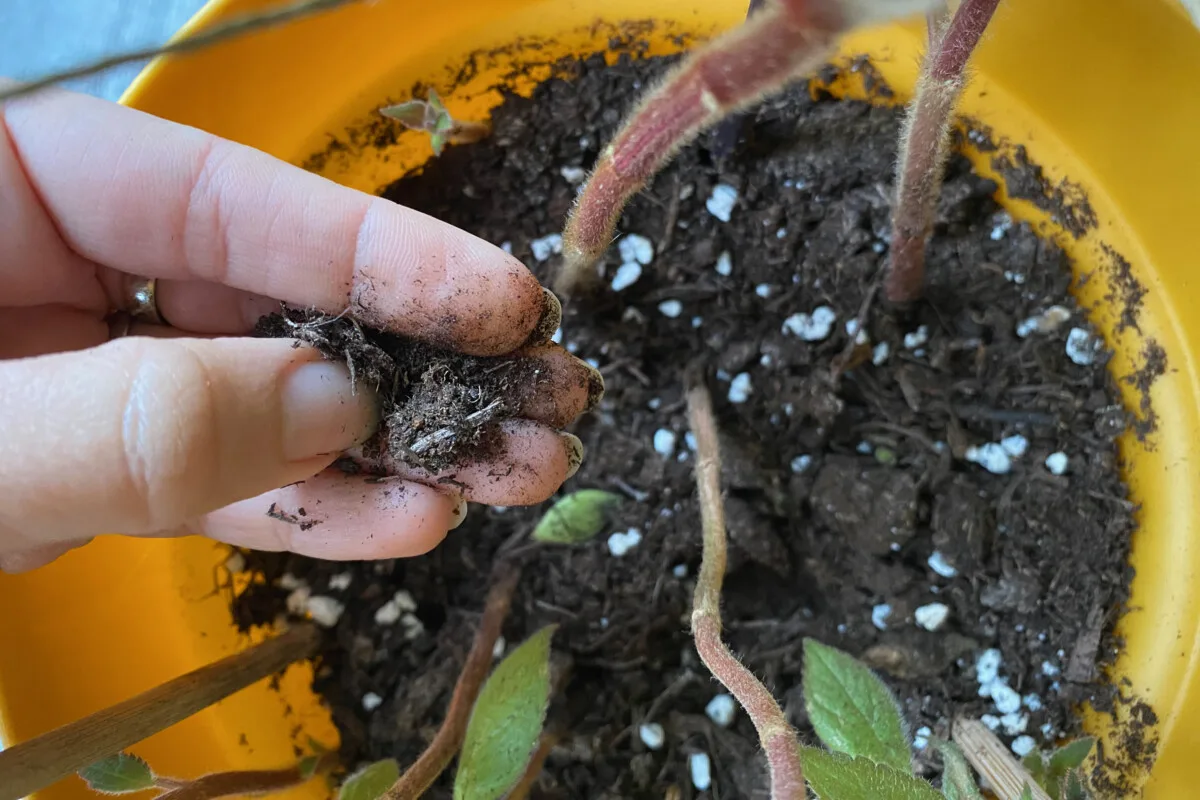
It worked for a while, but it wasn’t a definitive solution because I hadn’t fully addressed the problem. So after a month or so, the funky smell reappeared. I won’t be taking this shortcut again.
Two things that I haven’t tried (because I don’t think they’ll work.)
You read a lot of solutions on the internet and want to try them all. (With visiting relatives in the house, the desperation to hide the smell was quickly beginning to take hold.) But even still, here’s what I didn’t do, simply because I didn’t think it would work.
Spraying a bleach solution on the soil. No, just no! The last place I want bleach is on my houseplants. Plus, I would have had to soak the soil in bleach to have it be effective, since the problem is likely to be deeper than surface level. This means that not only would I be killing all the organisms in the soil, but I would likely also be harming the plant.
